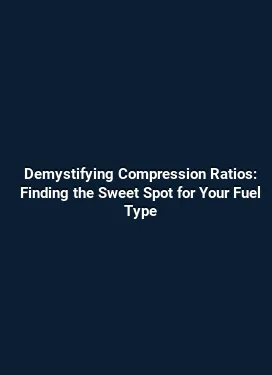Twin Scroll vs Single Scroll Turbo Comparison for Toyota Supra 2JZ
Overview of Turbocharger Concepts in the 2JZ Engine Family

Turbocharging fundamentally alters how an engine generates power by forcing more air into the combustion chamber. In the context of the Toyota Supra with the 2JZ engine lineage, turbocharger design choices directly influence throttle response, peak power, and drivability. Two common configurations are twin scroll and single scroll turbos. While both aim to maximize air delivery, their internal passages, scavenging effects, and matching to exhaust rhythms create distinct characteristics. For enthusiasts and tuners, understanding these nuances helps in choosing a setup that aligns with intended use, whether it’s track aggression, street manners, or a balanced blend of both.
The core difference between the two lies in how exhaust pulses are directed to the turbine. A single scroll turbo gathers all exhaust flow from the exhaust manifold and channels it into one turbine housing. A twin scroll design splits the exhaust into two separate scrolls, each feeding its own portion of the turbine wheel. This segregation allows more precise control of exhaust energy, improving throttle response at lower engine speeds and often delivering a more linear power curve at mid-range RPMs.
Technical Anatomy: How Each System Manages Airflow
In a single scroll configuration, the turbine sees the combined energy of all exhaust pulses. While simple and cost-efficient, this arrangement can cause pulse interference, where exhaust pulses interact in ways that reduce the efficiency of energy transfer at certain RPMs. A twin scroll design mitigates this by using two separate inlet passages that align with specific cylinder banks or paired cylinders. This reduces energy losses due to pulse interference and can yield quicker turbine responsiveness, especially in engines with a wide torque band like the 2JZ. The practical implication is a more immediate spool onset and a broader usable throttle area without resorting to extreme boost levels.
From a mechanical perspective, twin scroll turbos often feature a divider inside the turbine housing, creating two separate paths for exhaust gases, whereas single scroll units have a single path with a shared turbine wheel. The result is a disturbingly simple idea: twin scrolls can capitalize on the symmetrical exhaust pulses from a straight six engine, turning them into smoother energy transfer, while single scrolls rely on the aggregate energy of all pulses.
Componentry and Matching: The Role of Compressor Maps and Turbine Volumes

Two critical aspects influence real-world performance: compressor map suitability and turbine housing sizing. The compressor map defines how the compressor handles different ambient conditions and engine speeds. A well-matched map ensures the turbo reaches the desired boost without unnecessary surge or choke, maintaining efficiency across the RPM range. Twin scroll systems often pair with a compressor that maintains stable airflow at lower RPMs, helping the engine breathe more effectively when the throttle is first pressed.
Turbine housing size also dictates the speed at which the turbine accelerates, which translates to turbo lag or response time. A smaller housing typically spools quicker but may cap peak flow, while a larger housing supports higher boost at high RPMs but can introduce more lag. In the 2JZ context, many builds optimize twin scroll configurations with carefully chosen turbine sizes to preserve low-end response while still delivering robust top-end performance.
Performance Characteristics: Real-World Impacts on the Supra 2JZ
Engine response and power delivery are the most tangible differences between twin scroll and single scroll layouts. Twin scroll setups tend to exhibit a more immediate throttle feel at low to mid RPMs. This translates to faster integration of boost during casual street driving and more predictable behavior in twisty backroads. For track-oriented drives, the improved control over exhaust energy can yield steadier mid-range torque, enabling more confident corner exits and faster lap times when the engine remains within its optimal boost window.
Single scroll configurations, by contrast, can push strong peak power in a narrower RPM band. When tuned for high-end performance, a single scroll can extract impressive top-end horsepower, particularly when paired with an efficient intercooling path and optimized intake tract. However, the trade-off is a tendency toward a more noticeable lag or a steeper rise in boost once the turbine reaches operating speed. For some drivers, this translates to a dramatic surge in acceleration once the boost threshold is crossed, which can feel less predictable in street traffic.
Torque Delivery and Power Band Shaping
Torque is the heartbeat of acceleration. Twin scroll systems generally provide a flatter, more usable torque curve across a broad RPM band, which translates to smoother acceleration in everyday driving and improved grip in dynamic maneuvers. Because exhaust energy is better managed, the engine can sustain boost into mid-range RPMs without abrupt transitions. In contrast, single scroll setups may offer a pronounced peak after boost onset, which can feel exhilarating but demands careful throttle management to avoid abrupt power spikes, especially in high-traction scenarios.
For a 2JZ engine in a Supra, the goal often centers on balancing streetability with track capability. A twin scroll configuration can deliver practical, repeatable Performance with less boost compensation needed for mid-range drivability. On the other hand, a well-tuned single scroll system can push impressive peak numbers for those chasing top-end speed, provided the rest of the drivetrain, cooling, and fuel system are aligned to the increased load.
Thermal Management and Reliability Considerations
Boosted engines are heat engines. The extra air forced into the cylinders increases charge density, which in turn can elevate intake air temperatures. Effective intercooling and cooling system upgrades are essential to preserve performance and reliability, particularly in hard-edged driving scenarios. Twin scroll designs, with their improved efficiency at lower RPMs, can sometimes generate less backpressure at initial boost stages, which can reduce thermal stress on the exhaust manifold and turbo housing when paired with a properly sized intercooler.
Additionally, compressor surge, a condition where the air can flow backward into the compressor wheel at certain operating points, should be avoided. Twin scroll arrangements are typically more forgiving in this regard due to smoother energy transfer, but any turbo setup requires precise wastegate actuation, robust oiling, and a reliable feed of coolant to maintain consistent performance under duress.
Cooling, Lubrication, and Maintenance Nuances
Turbocharger health hinges on stable lubrication and consistent cooling. Oil pressure and quality directly influence bearing life. In high-performance builds, synthetic oils with appropriate viscosity, plus upgraded oil lines and cooler options, help maintain oil film strength under elevated load. For the 2JZ, ensuring the oil pickup remains unobstructed and that the cooling circuit accommodates sustained boost is essential. When upgrading to a twin scroll or single scroll arrangement, verify that oil drain paths are optimized to prevent oil pooling, which can lead to cavitation and bearing wear.
Maintenance practices such as regular oil changes, monitoring turbomachinery for signs of wear, and inspecting intercooler plumbing for leaks are crucial. A well-maintained system ensures that both twin scroll and single scroll configurations deliver consistent performance over time.
Practical Guidelines for Choosing Between Twin Scroll and Single Scroll
- Intended Use: If daily drivability and corner performance matter most, twin scroll often delivers a more progressive feel. For outright top-end excitement and a high-gear, high-speed profile, a tuned single scroll may be preferable.
- Engine Tuning Compatibility: A twin scroll setup pairs well with broad torque mapping and mid-range efficiency, while a single scroll can be tuned to maximize peak power with precision calibration.
- Boost Management: Consider how the boost curve is shaped. Twin scroll tends to offer smoother low-end response; single scroll may require careful wastegate and compressor matching to avoid lag spikes.
- Cooling Strategy: Both configurations benefit from a robust intercooling system. Additional radiator capacity and charge-air cooling can unlock more consistent performance under sustained load.
In a practical sense, many Supra enthusiasts opt for a hybrid approach: select a twin scroll core for its wide, usable torque and install a turbine housing that supports a healthy top end, then tune the boost and fuel to maintain safe engine intake temperatures. This strategy emphasizes reliability and repeatable performance across a variety of driving environments.
Trend Keywords and Semantics: How the Market Interacts with Tech Choices
Contemporary performance discourse highlights the importance of response time, heat management, and efficiency in turbocharged engines. Trend-oriented terms such as boost onset, spool speed, throttle modulation, and intercooler effectiveness have become central to how builders communicate the value of a given turbo architecture. The semantic emphasis sits on achieving a balance: the fastest possible spool with stable manifold pressures, minimal lag, and a consistent delivery of torque across the RPM spectrum. In this context, twin scroll architectures are frequently discussed as a practical path to improved low- and mid-range response without sacrificing peak power, especially when paired with a well-optimized intake and exhaust manifold strategy.
From the perspective of lifecycle performance, reliability and efficiency are equally critical. Trend-conscious owners look for configurations that deliver sustained boost across multiple sessions, avoiding heat soak and fuel economy penalties while preserving engine longevity. A holistic approach—integrating turbo design with cooling, lubrication, and fueling—reflects the evolving engineering philosophy behind the 2JZ-powered Supra community.
Real-World Scenarios: Testing and Tuning Scenarios for the Supra 2JZ
A practical evaluation starts with baseline measurements on a stock or lightly upgraded engine. Key metrics include horsepower at the crank, torque curves, boost pressure stability, intake air temperature, and air-fuel ratio under various load conditions. When migrating to twin scroll, a tuner typically re-evaluates exhaust manifold routing, turbine sizing, and compressor map alignment to ensure the new system translates into a smoother throttle response and a broader usable torque band. The process often involves dyno testing across multiple gears and RPM windows to capture the true performance envelope.
For single scroll configurations, the testing focus shifts toward ensuring the peak power region remains accessible without introducing excessive lag or surge. A sequence of wheel horsepower and torque tests, combined with in-gear acceleration profiling, helps quantify real-world improvements. A robust data-driven approach—tracking boost response, volumetric efficiency, and fuel trim behavior—guides the final tuning decisions.
Integration with Supporting Systems: Exhaust, Intake, and Fuel
Turbo decisions do not exist in isolation. Exhaust piping diameter, catalytic converters, and the overall exhaust gas temperature profile influence both performance and longevity. A well-planned twin scroll installation often requires a matching exhaust manifold with appropriately spaced runners, designed to deliver balanced energy to each scroll. The intake plenum and intercooler routing must minimize pressure losses and thermal loads, ensuring that the compressor operates within its efficient region of the map across a broad RPM range.
Fuel system upgrades are equally vital. Higher boost levels demand robust injectors and precise fuel delivery control. When the engine breathes more air, the air-fuel mixture must be tuned to maintain stoichiometry under load. In the Supra’s 2JZ ecosystem, this often means upgraded fuel pumps or secondary injection strategies paired with calibrated engine management to avoid detonation and to preserve ignition timing integrity.
Conclusionary Considerations (Without Using Conclusive Language)
The comparison between twin scroll and single scroll turbo configurations for the Toyota Supra 2JZ reveals that each approach carries distinct advantages. Twin scroll tends to enhance low-to-mid RPM responsiveness and mid-range torque, delivering a more tractable daily-driving experience with robust mid-range performance. Single scroll, when properly tuned, can emphasize peak power and high-end thrust, appealing to those chasing maximum output at higher RPMs. The practical outcomes depend heavily on how well the entire powertrain—turbo, intercooler, exhaust, intake, fueling, and engine management—is matched to the chosen architecture.
For owners planning a build or a major upgrade, a methodical approach that includes dyno-backed validation, thermal management planning, and drivetrain reliability considerations will yield the most reliable, engaging, and repeatable driving experience. The decision often centers on the preferred driving character: the immediacy and balance of twin scroll or the explosive top-end potential of a well-tuned single scroll.
Ultimately, the best choice aligns with where and how the Supra will be driven: long straights and track days might favor precise top-end tuning, while spirited street drives benefit from the predictable, broad torque delivered by an optimized twin scroll setup.






